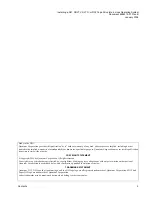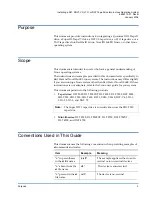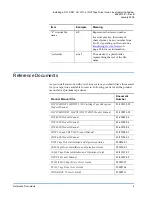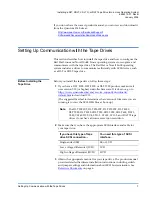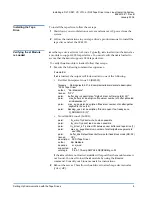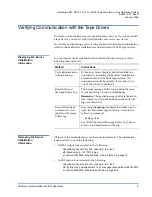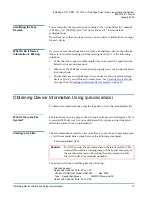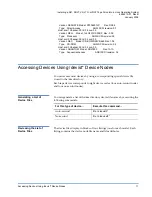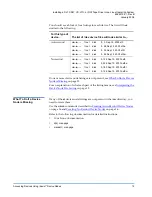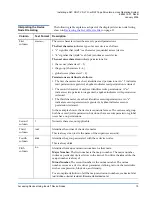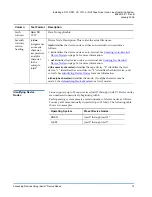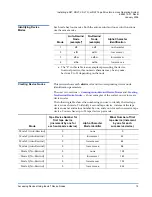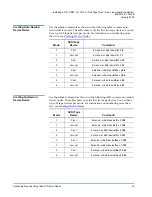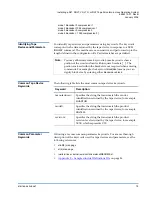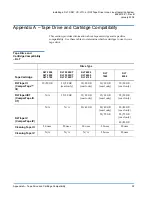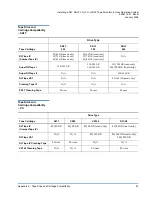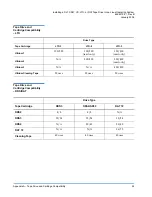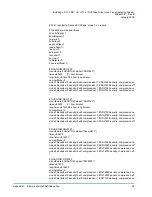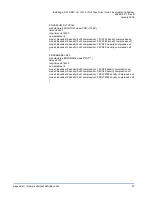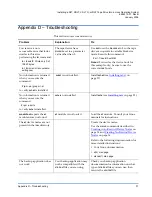
Installing a DLT, SDLT, VS, LTO, or DAT Tape Drive Into a Linux Operating System
6464215-01, Rev B
January 2006
stinit and stinit.def
18
stinit and stinit.def
0
stinit
automatically initializes SCSI tape drive modes at system startup or
reboot by sending
ioctl
commands to the drive. The commands are defined in
the
stinit.def
definitions
text file. The text file is indexed using the inquiry data
returned by the drive (manufacturer, device, and revision).
See
Tape Device
and Parameter Definitions
for more information about the
stinit.def
file.
After a new installation of the Linux operating system or a new installation of
mt-st
, an
stinit.def
file may not exist. You can create an
stinit.def
file by using the
following sample file:
/usr/share/doc/mt-st-<version>/stinit.def.examples
If you modify
stinit.def,
you can re-initialize the SCSI tape drive modes by
rebooting the server or executing the following command:
# stinit or # stinit -f <pathname>/stinit.def
where
pathname
is the path where
stinit.def
file is stored.
By default,
stinit
searches your present working directory to find the
stinit.def
file. If
stinit
cannot find
stinit.def
in the working directory, it searches
/etc/
stinit.def
.
For more information on
stinit
, see the
stinit(8) man page
.
Tape Device and
Parameter Definitions
0
The
stinit.def
file contains definitions of tape devices and their corresponding
initialization parameters.
Some of the parameter conventions are listed in the following table:
The following example shows a single entry of a tape device in the
stinit.def
file:
# The XY dat
manufacturer=XY-COMPANY model = "UVW DRIVE" {
scsi2logical=1 # Common definitions for all modes
can-bsr can-partitions auto-lock
# Definition of modes
Item
Definition
{ }
Parameter definitions are delimited by { }.
name =
value
Definitions consist of pairs where
name =
value
. The
value
is either a numeric parameter, a string not containing
blanks, or a string enclosed within quotation marks.
If
= value
is omitted, a value of “1” is assigned.
#
If the
#
character appears
in an input line,
stinit
deletes
from the buffer everything following the
#
character up
to the next carriage return. This enables you to make
comments in the
stinit.def
file.

